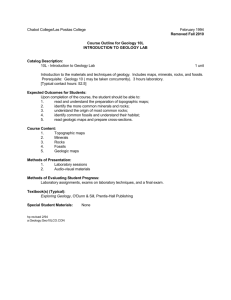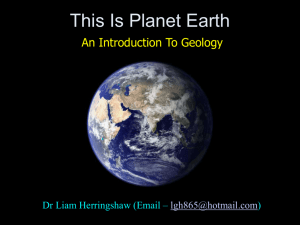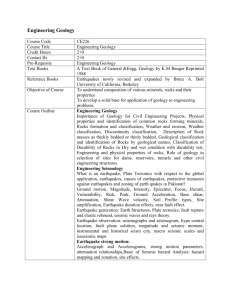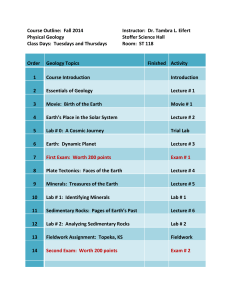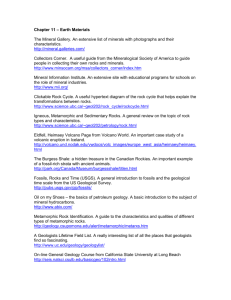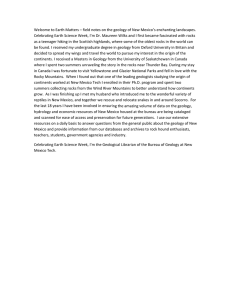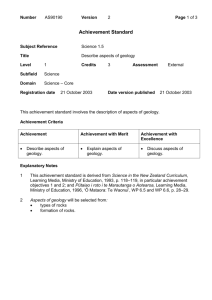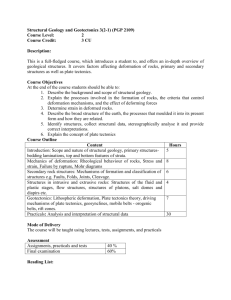Geology
advertisement
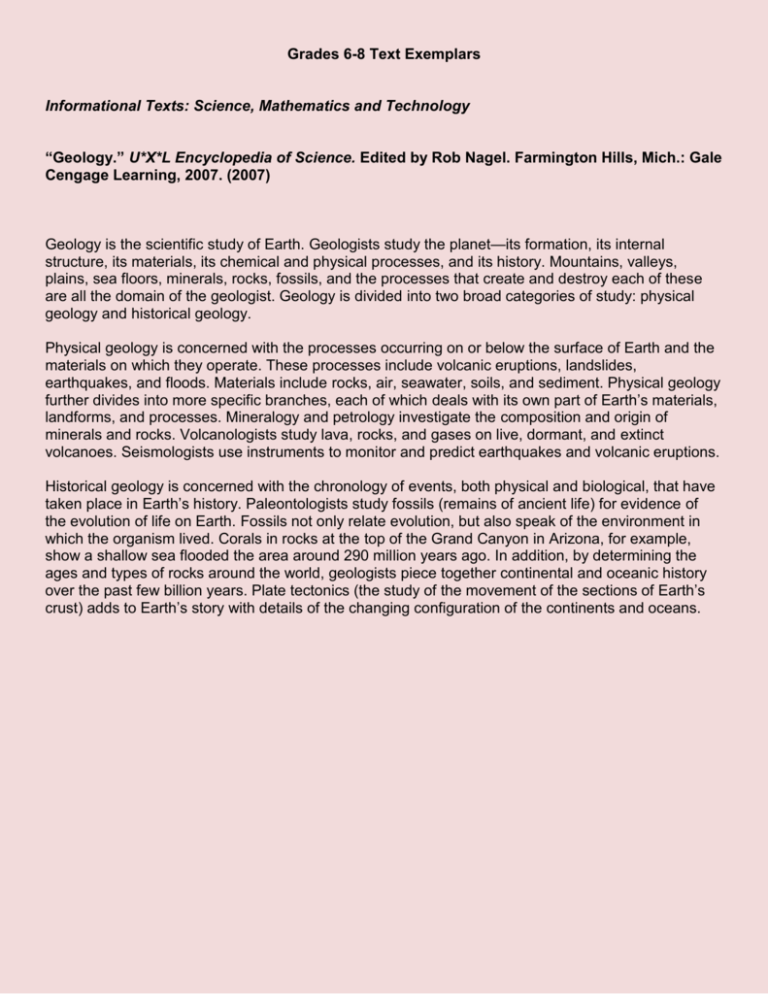
Grades 6-8 Text Exemplars Informational Texts: Science, Mathematics and Technology “Geology.” U*X*L Encyclopedia of Science. Edited by Rob Nagel. Farmington Hills, Mich.: Gale Cengage Learning, 2007. (2007) Geology is the scientific study of Earth. Geologists study the planet—its formation, its internal structure, its materials, its chemical and physical processes, and its history. Mountains, valleys, plains, sea floors, minerals, rocks, fossils, and the processes that create and destroy each of these are all the domain of the geologist. Geology is divided into two broad categories of study: physical geology and historical geology. Physical geology is concerned with the processes occurring on or below the surface of Earth and the materials on which they operate. These processes include volcanic eruptions, landslides, earthquakes, and floods. Materials include rocks, air, seawater, soils, and sediment. Physical geology further divides into more specific branches, each of which deals with its own part of Earth’s materials, landforms, and processes. Mineralogy and petrology investigate the composition and origin of minerals and rocks. Volcanologists study lava, rocks, and gases on live, dormant, and extinct volcanoes. Seismologists use instruments to monitor and predict earthquakes and volcanic eruptions. Historical geology is concerned with the chronology of events, both physical and biological, that have taken place in Earth’s history. Paleontologists study fossils (remains of ancient life) for evidence of the evolution of life on Earth. Fossils not only relate evolution, but also speak of the environment in which the organism lived. Corals in rocks at the top of the Grand Canyon in Arizona, for example, show a shallow sea flooded the area around 290 million years ago. In addition, by determining the ages and types of rocks around the world, geologists piece together continental and oceanic history over the past few billion years. Plate tectonics (the study of the movement of the sections of Earth’s crust) adds to Earth’s story with details of the changing configuration of the continents and oceans.

